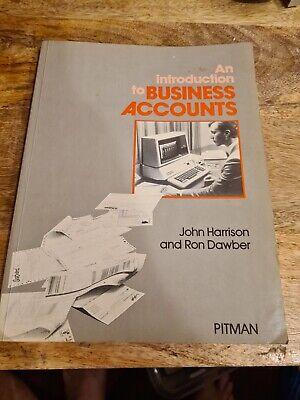Answered step by step
Verified Expert Solution
Question
1 Approved Answer
Investments in securities include both debt and equity securities. ______________ securities reflect a creditor relation such as investments in notes, bonds, and certificates of deposit.
- Investments in securities include both debt and equity securities. ______________ securities reflect a creditor relation such as investments in notes, bonds, and certificates of deposit. _______________ securities reflect an owner relation such as investments in shares of stock issued by corporations.
- Investments are recorded as either short-term or long-term investments based on managements ________________ to hold the security either short term or long term.
- __________________ securities are debt investments that a company actively buys and sells for profit. They are always short-term investments.
- __________________________ securities are debt investments that a company intends and is able to hold until they mature. They can be classified as short-term or long-term, depending on their maturity date.
- __________________________ securities are debt investments not classified as trading or held-to-maturity (HTM) securities. They can be classified as short-term or long-term, based on managements intent.
- How equity securities are classified and accounted for depends on the investors ___________________________________ in the other companys (investees) stock.
- Stock (equity) investments with insignificant influence are stock investments for which the investor owns less than _______% of the voting stock of the investee company. These investments can be classified as short-term or long-term, depending on managements intent and the stocks marketability.
- Investments are classified as equity securities with significant influence when the investor owns between ________% and ________% of the investee companys voting stock. These investments are always classified as long-term.
- Investments are classified as equity securities with controlling influence when the investor owns more than ________% of the investee companys voting stock. These investments are always classified as long-term.
- All debt investments are originally recorded at _____________ when purchased.
- Interest received on debt investments is recorded with a credit to ______________________ ____________________.
- Trading debt securities are adjusted to their ______________________ on the balance sheet, and the resulting unrealized gain or loss is reported on the _____________________________.
- Available-for-sale (AFS) debt securities (both short-term and long-term) are adjusted to their _______________________ on the balance sheet, and the resulting unrealized gain or loss is reported _____________________________________________________.
- All equity investments are originally recorded at _______________ when acquired, including any commissions or brokerage fees paid.
- The purchase of equity investments with insignificant influence is recorded with a debit to _________________________________.
- For equity investments with insignificant influence, dividends received from the investee are recorded by the investor with a credit to __________________________________.
- Stock (equity) investments with insignificant influence (both short-term and long-term) are adjusted to their ____________________________ on the balance sheet, and the resulting unrealized gain or loss is reported on the ___________________________________________.
- The purchase of equity investments with significant influence is recorded with a debit to _____________________________________.
- Long-term investments in equity securities with significant influence are accounted for using the __________________ method.
- Under the equity method, when the investee company reports its earnings, the investor records its share (ownership %) of those earnings in its investment account by debiting Equity Method Investment and crediting ____________________________________________________.
- Under the equity method, cash dividends received from the investee are recorded by the investor by debiting Cash and crediting ________________________________________.
- Dividend Revenue is never recorded for dividends received from an Equity Method Investment.
- Under the equity method, the Equity Method Investment account is being adjusted for the investors share (ownership %) of changes in the investee companys equity. When the investee company reports earnings, the investee companys equity increases and the value of the Equity Method Investment on the investors balance sheet will ___________________. When the investee company pays dividends to its shareholders, the investee companys equity decreases and the value of the Equity Method Investment on the investors balance sheet will ______________________.
- Long-term investments in equity securities with controlling influence are accounted for using the ________________________________ method.
- The controlling investor company is called the __________________, and the investee company is called the ______________________________.
- Under the consolidation method, the financial statements are consolidated. Consolidated financial statements show the results of operations, financial position, and cash flows of ___________ entities under the parent companys control. The consolidated financial statements are prepared as if the businesses were organized as one entity.
- Whenever trading debt securities, available for sale (AFS) debt securities, or equity securities with insignificant influence are sold, Cash is debited for the sale proceeds; Debt Investments Trading, Debt Investments AFS, or Stock Investments is credited for the original cost of the investment; and either _____________ on Sale of Investments is recorded if the sale proceeds are higher than cost, or _____________ on Sale of Investments is recorded if the sale proceeds are lower than cost.
- Whenever equity securities with significant influence are sold, Cash is debited for the sale proceeds; Equity Method Investment is credited for the _____________________________ of the equity method investment on the sale date; and Gain/Loss on Sale of Investments is credited/debited for the difference.
Step by Step Solution
There are 3 Steps involved in it
Step: 1

Get Instant Access to Expert-Tailored Solutions
See step-by-step solutions with expert insights and AI powered tools for academic success
Step: 2

Step: 3

Ace Your Homework with AI
Get the answers you need in no time with our AI-driven, step-by-step assistance
Get Started


